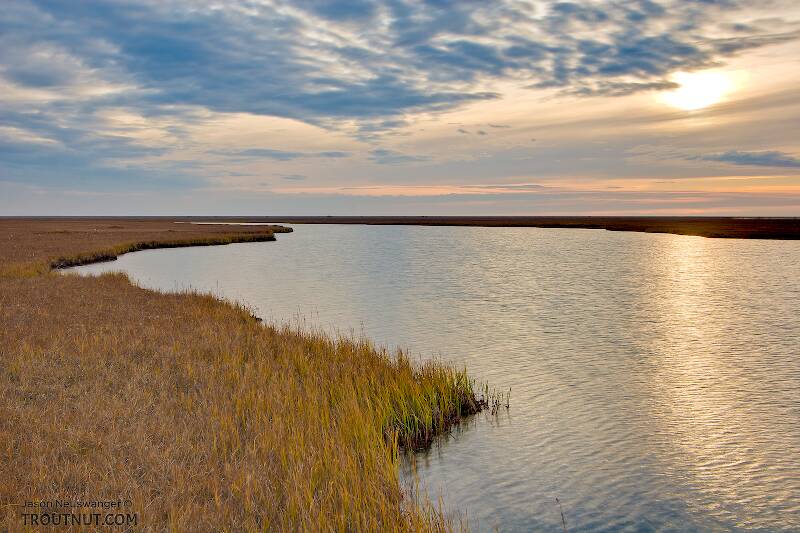Temperature and Seasonal Shifts
Most species prefer specific water and air temperatures for emergence and other coordinated activities. Their preference varies widely and it's one of the most important reasons to learn about individual species, but there are also some general trends.
Early in the spring the best insect activity comes during the warmest part of the day. It slips into the evening as summer approaches, and that's the time to catch most of the best hatches in June. After that some of the activity moves to dusk, overnight (especially for caddisflies), or around the clock to dawn. By August, morning is usually best.
In fall the trend reverses, with dusk hatches appearing again in September and some midday action in October. In most cases this activity pales in comparison to the spring hatches because most of the major species are already finished. But there are exceptions, including the massive Dicosmoecus caddisflies of the West.
As temperature varies day by day most of the hatch times vary with it. In the spring and fall, warm days tend to push hatches toward evening. In the summer, cool days may bring them back from evening into the afternoon, while hot days push evening activity (especially spinner falls) into the next morning.
Ernest Schwiebert observed in Matching the Hatch that the best hatches usually coincide with the most pleasant time of the day to be on the stream. There are plenty of exceptions, and that's why it helps to learn about important species individually, but in the absence of better information the "pleasant hours" rule of thumb is a good one.
Humidity, Sunlight, and More
Surprise hatches may be sparked by a bit of ideal weather at an unlikely time of day, and others are postponed when their usual time brings nasty conditions.
- Humidity: Aquatic insects try to avoid extreme humidity, because it makes drying their wings difficult. This is especially true of mayflies which emerge in the surface film where speed is very important. However, if it's too dry, the adults risk death by dehydration. This, too, is most important for mayflies, because they cannot eat or drink as adults.
- Sunlight or Clouds: Some species favor sunlight, but many, like the early season Blue Quill mayflies of Paraleptophlebia adoptiva, seem to relish cold, dark stormy days.
- Rain: Pounding raindrops make the surface uninviting for most emergers, and they make flight more difficult. They have the worst effect on mayfly spinners, because their bodies do not shed water as well as their duns or other insects.
- Wind: Choppy water is makes it hard for hatching insects to dry their wings on the surface, and strong wind may knock them back into the water. It also wreaks havoc on mating swarms, which have to negotiate a mid-air docking that would give NASA engineers nightmares.
None of these factors necessarily stop the hatch from coming, but when that happens they are likely culprits. Some of our best fishing days come when the bugs hatch anyway in spite of the weather working against them. Wind, rain, and humidity thwart their attempts to escape the surface. The trout feast, and the anglers smile.
Cues from Nature
A lengthy article could be written (by somebody more experienced than I) about the helpful cues other animals provide on the river. For example, the first daily song of the whippoorwill is a remarkable predictor of the hatching of giant Hexagenia limbata mayflies on muggy summer nights. Such tips are hard to find in any angler's library; look instead to the patios of fly shops and the crackling campfire for this kind of wisdom.




